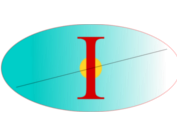Citation:
| baratz2012.pdf | 332 KB |
Abstract:
We present a molecular junction composed of a donor (polyacetylene strands) and an acceptor (malononitrile) connected together via a benzene ring and coupled weakly to source and drain electrodes on each side, for which a gate electrode induces intramolecular charge transfer, switching reversibly the character of conductance. Using a new brand of density functional theory, for which orbital energies are similar to the quasiparticle energies, we show that the junction displays a single, gate-tunable differential conductance channel in a wide energy range. The gate field must align parallel to the displacement vector between donors and acceptor to affect their potential difference; for strong enough fields, spontaneous intramolecular electron transfer occurs. This event radically affects conductance, reversing the charge of carriers, enabling a spin-polarized current channel. We discuss the physical principles controlling the operation of the junction and find interplay of quantum interference, charging, Coulomb blockade, and electron-hole binding energy effects. We expect that this switching behavior is a generic property for similar donor-acceptor systems of sufficient stability.
Notes:
RBaer-Publication



